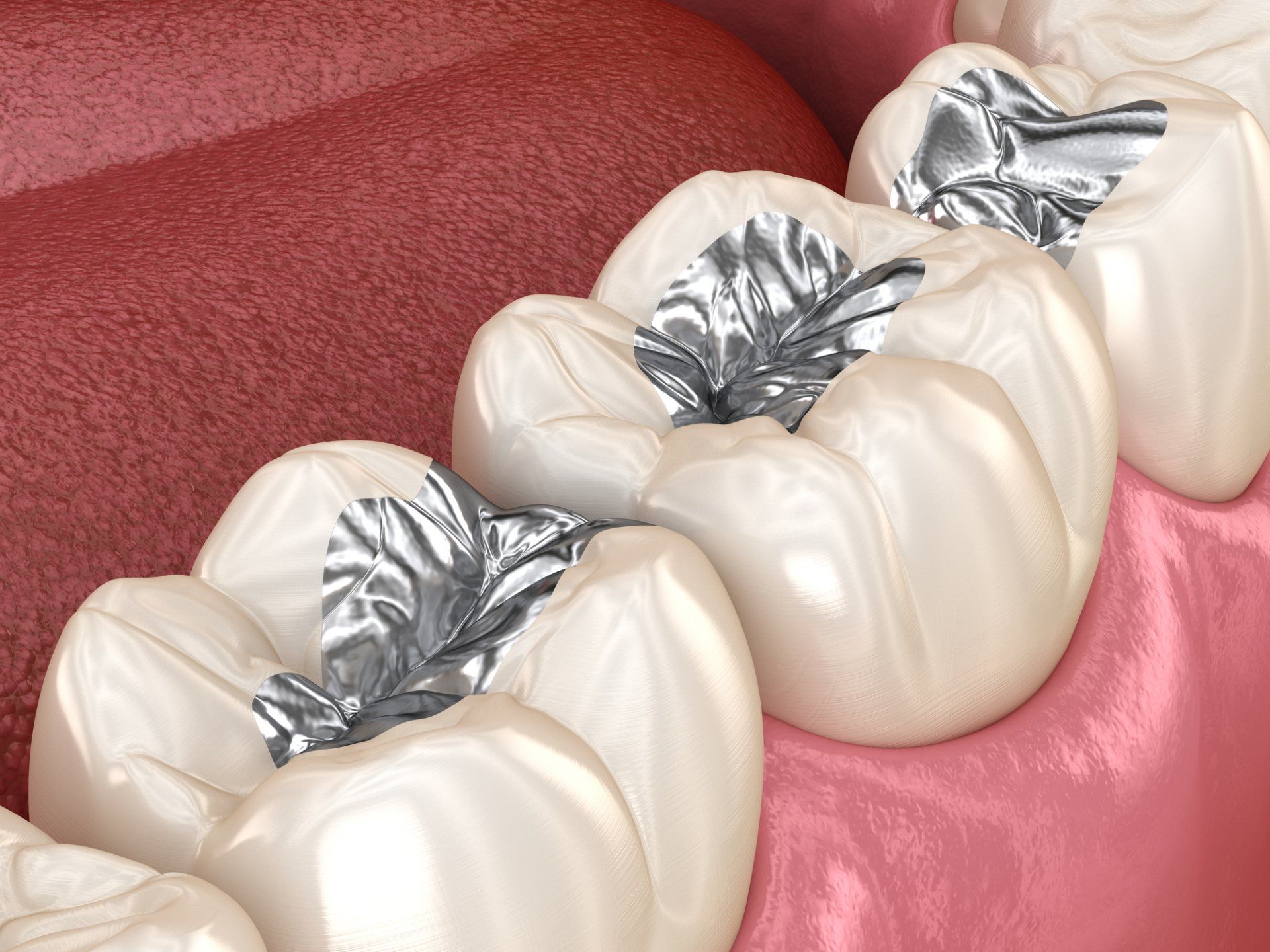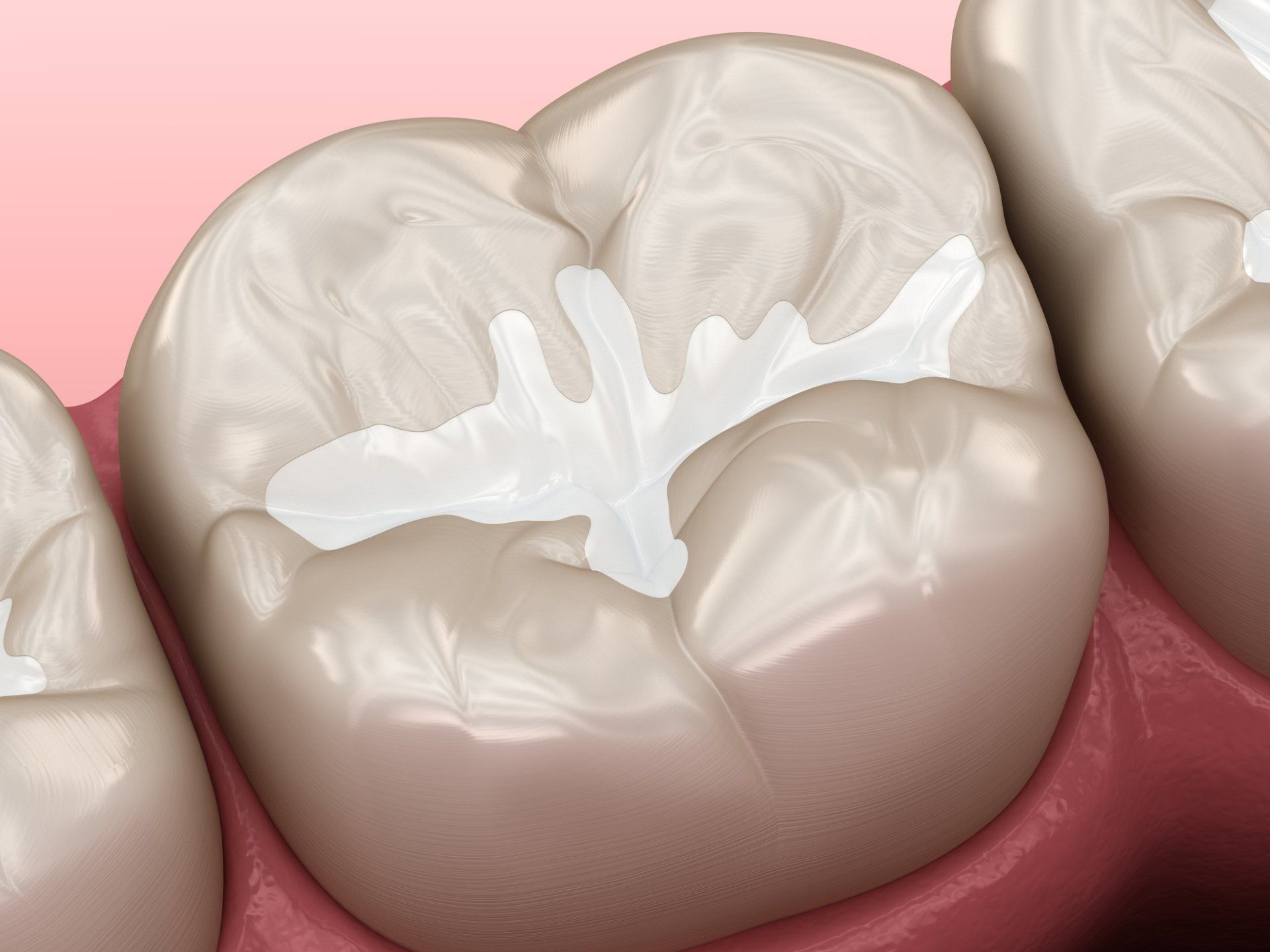Tooth Fillings In Pittsburgh
Dental fillings can restore the appearance of your tooth and halt tooth decay by providing a barrier between the decaying area and harmful bacteria, Ask about fillings today!
Traditional Tooth Fillings
Traditional dental restoratives, or fillings, were most often made of amalgam, many people called these silver fillings. In fact metal fillings are a mixture of silver, tin, zinc, copper and mercury. They have been used for over 100 years to fill cavities. Over the years concerns about mercury have led to the development of alternatives.

Modern Tooth Fillings
Newer dental fillings include ceramic and plastic compounds that mimic the appearance of natural teeth. These compounds are often called composite resins. The advantages of these restorations are that less tooth structure must be removed than with amalgam restorations as they are bonded to the tooth structure when being placed, and they can match the color of your tooth. Disadvantages are that some insurance companies still choose to pay less for composites than amalgam restorations so the patient out of pocket can be a bit higher for some patients depending on your insurance. Some people initially experience sensitivity after the filling is placed, most often resolving within a few weeks.
Here at Dr. Gregory Peterson & Associates, we typically place modern fillings as we would like to maintain as much of your own natural tooth structure as long as possible. If you have questions about cost difference or types of filling please don’t hesitate to ask prior to scheduling.

What Steps Are Involved In Filling a Tooth?
First, your dentist will numb the area around the tooth to be worked on with a local anesthetic. Next, a drill, and air abrasion instrument will be used to remove the decayed/damaged area. Your dentist will probe or test the area during the decay removal process to ensure that all the decay has been removed. After your dentist has removed the decay and cleaned the area, if the decay is found to have been near the nerve, then we may first put in a special liner to protect the nerve. Then tooth-colored material is applied in layers. Next, a special light that “cures” or hardens each layer is applied. When the multi-layering process is completed, we will shape the composite material to the desired result, trim off any excess material and polish the final restoration.
What Tooth Filling Solution is Right For Me?
Several factors influence the performance, durability, longevity, and expense of dental restorations, including:
- The components used in the filling material
- The amount of tooth structure remaining
- Where and how the filling is placed
- The chewing load that the tooth will have to bear
- The length and number of visits needed to prepare and adjust the restored tooth
Before your treatment begins, your doctor will discuss with you all of your options and help you choose the best filling for your particular case. In preparation for this discussion it may be helpful to understand the two basic types of dental fillings — direct and indirect.
- Direct fillings are fillings placed into a prepared cavity in a single visit. They include silver amalgam, glass ionomers, resin ionomers, and composite (resin) fillings. The dentist prepares the tooth, places the filling, and adjusts it in one appointment.
- Indirect fillings generally require two or more visits. They include inlays, onlays, and veneers fabricated with gold, base metal alloys, ceramics, or composites. They are used when a tooth has too much damage to support a filling but not enough to necessitate a crown. During the first visit, the dentist prepares the tooth and makes an impression of the area to be restored. The dentist then places a temporary covering over the prepared tooth. The impression is sent to a dental laboratory, which creates the dental restoration. At the next appointment, the dentist cements the restoration into the prepared cavity and adjusts it as needed.

If it's been six months since your last dental checkup, then it's time to contact our practice and schedule your next appointment!